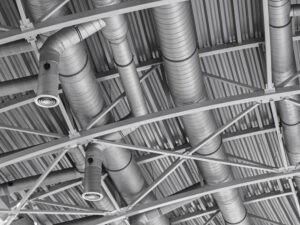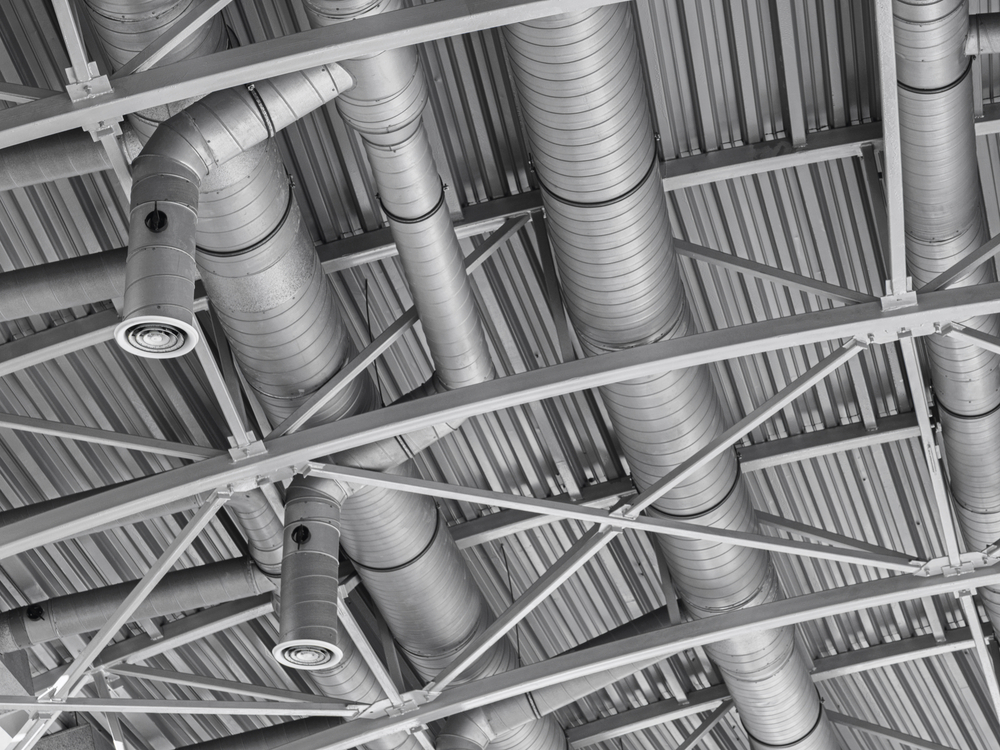 HVAC systems are designed to add comfort to various buildings and indoor environments. The quiet hum that travels throughout an HVAC system is a constant presence in office spaces, hospitals, hotels, residential homes, and commercial buildings.
HVAC systems are designed to add comfort to various buildings and indoor environments. The quiet hum that travels throughout an HVAC system is a constant presence in office spaces, hospitals, hotels, residential homes, and commercial buildings.
However, when that quiet hum turns into loud hissing or excessive rattling noises, it can disrupt the environment for workers and guests. Acoustics is only one part of the challenge of maintaining modern HVAC systems. Energy efficiency and fire safety also must be considered when determining the right solution for insulating ductwork and equipment components for various HVAC applications.
While numerous methods and materials can be used, melamine foam is a highly effective solution for increasing sound absorption, improving thermal management, and minimizing safety challenges. Our POLYDAMP® Melamine Foam (PMF) is a type of melamine foam recommended for specific HVAC applications because of its lightweight construction and acoustical and thermal properties.
We will explain why PMF is suitable for HVAC systems and ductwork and how it addresses a range of challenges that impact how an HVAC system sounds, how well it maintains temperature, and how safe it is to run.
HVAC Issues that Could Impact Your Environment
HVAC systems are highly complex networks of heating and cooling components and ductwork designed to ensure thermal consistency across various parts of a building. Since there are so many parts and components, ongoing maintenance and upkeep are necessary to ensure performance. When the system isn’t working correctly, it could make it louder for people to work and create temperature fluctuations that limit comfort.
Frequent loud noises and energy loss could be a sign of many things, but the culprit is often poor insulation and design in the ductwork.
- Air turbulence created by sharp bends or obstructions in the ducts can cause loud noises and impede airflow, affecting temperature regulation.
- If the ducts are poorly insulated, heated or cooled air generated by the unit can also escape, leading to air leaks and indoor temperature issues.
Additionally, as ducts can run inside walls, ceilings, and other hidden parts of the building, HVAC professionals must also consider fire safety in the application. Any insulation used must comply with all fire safety regulations and reduce fire risk. We’ll explain how PMF can mitigate these challenges while improving air quality and creating a better environment for anyone inside the building.
How Does PMF Support HVAC Applications?
PMF is a type of melamine foam that is extremely lightweight and possesses excellent acoustical and thermal insulation properties. It also exhibits exceptional resistance to heat, low flame propagation, and smoke for safety. It meets all HVAC flame, smoke, and toxicity standards, making it a preferred option for many heating, cooling, and ventilation applications. PMF is available with film facings and adhesive backings for individual applications.
Melamine foam is known for its sound control capabilities because of its open cell structure, which allows sound waves generated by the ducts and system fans to travel deeply into the foam. It also provides excellent thermal insulation. PMF, specifically, has a low thermal conductivity of 0.24 BTU in/ft²-hour at 68 °F, resisting heat transfer and maintaining room temperature. This helps to reduce energy costs and system overload.
PMF is preferred in many HVAC applications for its fire resistance and low flame propagation. Ducts can become a dangerous pathway for fire and smoke, so it’s essential to have materials that will not contribute to their spread. Instead of dripping in the presence of a flame, PMF will char and limit propagation. The material will also stop burning once the external flame is extinguished. If there is a fire, PMF emits low amounts of smoke and toxic substances into the air, providing a safer choice for public environments, especially schools and hospitals.
Finally, the open cell structure of PMF and other melamine foams makes them easy to cut, handle, and install as duct linings. Professionals don’t have to worry about excessive weight from the lining impacting structural support within the building. This could also help reduce building and maintenance costs, as less labor and time are typically needed to install this type of insulation than other materials. Its semi-rigid nature enables it to conform to various surfaces for long-term use.
While we have focused primarily on duct lining, PMF may be a viable option for other uses in an HVAC system, including providing insulation within the unit and various enclosures that support the system. Our experts can help you identify ways in which PMF may be a preferred option.
Finding the Right Insulation Material for the Job
If you’re looking for a quieter and more comfortable indoor environment, PMF and other melamine foams are an excellent choice. PMF is versatile, safe, and suitable for many HVAC applications and settings. It has excellent sound absorption, thermal management, and fire resistance while being extremely lightweight and relatively flexible. Yet, many variables and requirements should be considered, which may make other materials or types of melamine foam more suitable.
We encourage you to reach out to us to discuss your specific acoustical, thermal, and safety requirements and identify a perfect fit. We offer a wide range of standard foam products that can be customized to meet your needs. Investing in high-quality foam insulation can improve system performance and reduce energy costs. Contact us today to find the best solution for your HVAC application.


